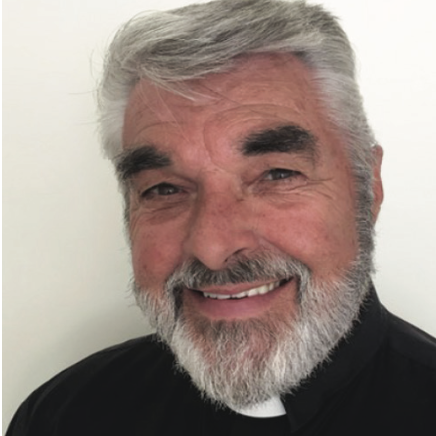From the Desk of a Deacon
The sixth chapter of the book of Acts describes the calling of the first seven deacons in the early church. Diákonos is a Greek word meaning waiter, servant or messenger and this is the sort of ministry deacons are called and ordained to. Although this work is done primarily in the community, the deacon also has a role in the liturgy and the wider church.
Vocational Deacons everywhere serve their local communities and the world as advocates, ministers, and leaders in places of suffering and injustice. This is where we are most comfortable. We are often described as tenacious, uncompromising, and even irritating. In fact, the collective noun often put forward for deacons is a “disturbance of deacons”, because we constantly ask the church to stand with those who have no voice. Ordination as a deacon commissions deacons to carry out that ministry. So, how does that relate to the way that we serve during the liturgy?
Deacon Ormonde Plater who wrote “Deacons in the Liturgy” described it this way: “As symbols, deacons embody two ancient concepts, angels and waiters. They are messengers and heralds of the Word. Deacons proclaim the good news of God in Christ and interpret the world to the community of faith. They oversee the Eucharistic meal, wait on the table, prepare, serve (the bread or cup), and clean up when the feast is done. They enable the hungry to eat and thirsty to drink, as they serve in the sacramental liturgies of the church and among God’s poor in the world.” In other words, the deacon’s role in the liturgy reflects their role outside the liturgy in the wider community. While the bishop and priest preside at the Eucharist and other congregational liturgies, deacons serve in the liturgy because their role is to mobilize the church for God’s work of healing the world.
Like the Herald Angels at Jesus birth, deacons proclaim the gospel. They bear witness to the world by preaching and modelling the servant ministry of Christ. Deacons often write and lead the intercessory prayers. In some traditions, deacons invite the confession. They serve at the table, serve Bread and Wine and then send the congregation into the world to live out our baptismal vows in God’s world.
In some circumstances, a deacon’s liturgical roles are intermingled with that of Lay Eucharistic Ministers. In most Anglican traditions, however, deacons will proclaim the gospel, serve at the altar, and dismiss the congregation and symbolically carry the Gospel out of the church and into the world. Deacons stand in what may seem an uncomfortable place with one foot in the church and the other in the world, ministering and bearing witness to the Good News in both.
The liturgical role of the deacon is distinct from that of priest and bishop. Deacons are not to be confused with priests and bishops by taking on their sacramental roles. The diaconate is a sacred and unique order because deacons serve the church and world in unique ways. Deacons know the suffering of God’s people and are called to lead the church to servant ministry everywhere.
Even the diaconal vestments are emblematic of diaconal ministry. The deacon’s stole, worn diagonally over the left shoulder and in the form of a bag slung over the shoulder, reminds us of the deacons in the early church taking food to the widows, orphans and aliens in need. The dalmatic, worn over the alb is reminiscent of a tunic often worn by waiters and servants during the early church era.
Deacons continue to manifest church and world to one another and serve those in need while playing their vital liturgical roles during Holy Eucharist, Morning Prayer, Baptism and other rites of the Church as needed.

